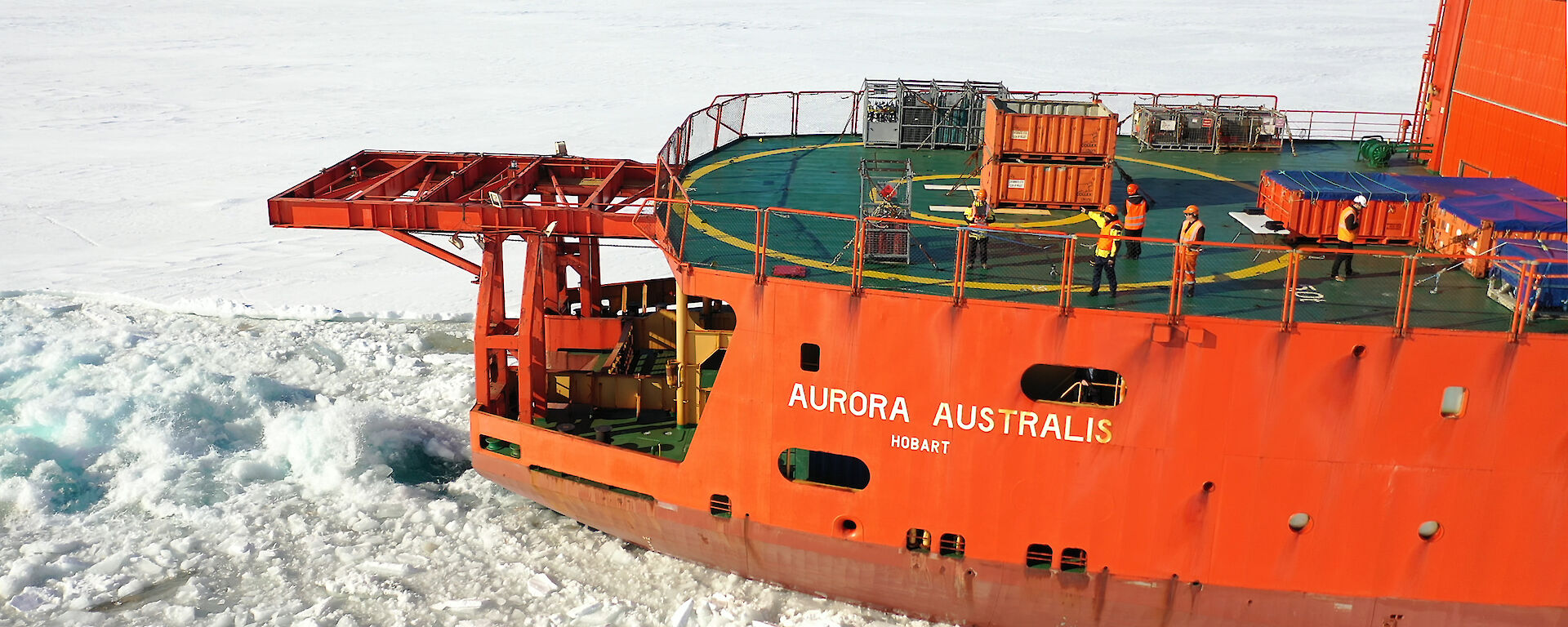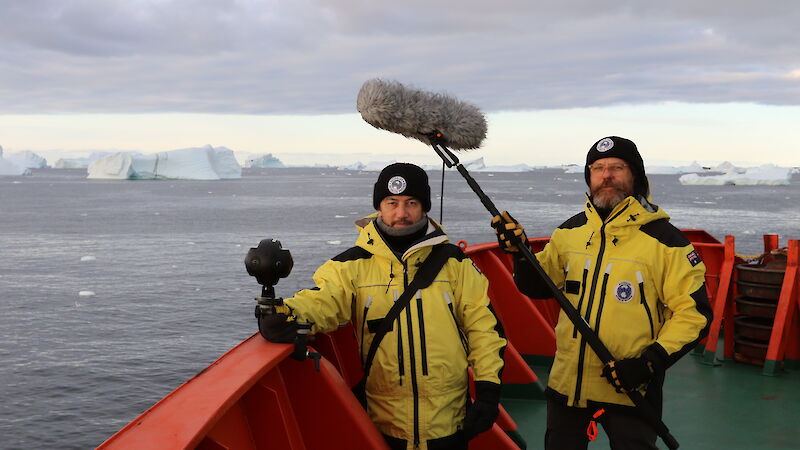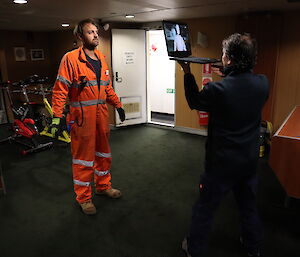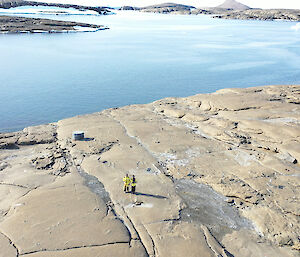As ‘Wild System’ we have been making digital art together for about 15 years. With a professional background in performance (dance and music), we usually use digital technologies like motion capture, virtual reality and data visualisation, to create performative, interactive audiovisual works in gallery and festival spaces.
For many years we had discussed the possibility of applying for the Australian Antarctic Arts Fellowship; we were fascinated by the thought of Antarctica and held a romantic notion of wanting to go there. But the annual call for submissions always seemed too broad for us to apply.
The call in 2019 was different; it specifically asked submissions to address the theme of ‘the final voyage of the Aurora Australis’ – the icebreaker that has been sailing its legendary Antarctic route for 30 years.
“Here's something we can set our talents to,” we thought.
There would be so much data generated and collected by the ship and its scientists and crew. We workshopped the idea over a couple of hours and decided to make a virtual version of not just the ship, but the whole voyage.
“It will be an artistic impression of the voyage, rather than any attempt to portray it realistically,” we told each other.
“It'll be like a giant, artistic data visualisation, projected onto the walls and ceiling of a large gallery, to create a totally immersive environment for people to enter.
“It can't hurt to put in a submission; it's a great idea and we know how to do it.”
Drawing on our experience and reputation, we sought support from the Australian Centre of the Moving Image in Melbourne, and the Salamanca Arts Centre in Hobart, who were keen to have us involved in the bi-annual Antarctic Festival that would be held three months after the end of the voyage.
We knew we would need to source a LIDAR scanner, which is a laser scanner that can scan physical spaces and turn them into digital 3D models. We also needed an ambisonic recording setup – a spatialised 3D audio recording technology. And we needed drones to capture high resolution imagery of the outside of the ship, to use in photogrammetry – another way of capturing physical spaces or objects as digital 3D models.
When our submission was accepted, we started to worry – will we be able to handle the harsh conditions, will we get seasick, will the crew and scientists think we're crazy, or worse, annoying? Well, we probably were annoying in the end, and a little crazy, but happily everyone else was crazy too, in the best possible sense.
We left Melbourne in the smoke haze of devastating bushfires and landed in Hobart amid the unfolding of a global coronavirus pandemic. We arrived a week prior to departure for training and inductions. Boarding the ship in Hobart for the first time was quite the experience; us in our immaculately ‘new out of the box’ Australian Antarctic Division issued high-viz gear and hard hats, looking every bit the new arrivals. This was also our first inkling of the enormity of the quest we had embarked upon. The ship, though dwarfed by the new Nuyina research vessel, was huge, with very intricate small spaces. Scanning was going to take an order of magnitude longer than planned.
We cast off from Hobart with a six week round-trip ahead of us. It was two weeks before anyone set foot on land again, at Davis research station. Just enough time to quarantine the ship and expeditioners, with the potential risk of COVID-19 infection to Antarctic expeditioners and wildlife on everyone’s minds.
The voyage was, of course, amazing. The expeditioners, Captain, crew and voyage leaders, were incredibly supportive of the project. Every day on the ship was full to the brim with interesting challenges: collecting data, helping with experiments, interviewing people on board, scanning the ship, scanning people, recording Glacial TV footage, 360 video, ambisonic audio recordings, motion capturing individuals, and flying drones around the ship and stations, photographing so much beauty.
Every day offered up incredible experiences. The seething Southern Ocean, towering Iceberg Alley, majestic Sørsdal Glacier, the mirror glass waters of the polynya approaching Mawson research station, the ice plain above the station, incredible wildlife, and an aurora australis dancing above the ship on the way home.
We envisaged collecting as much data as possible for the exhibitions. Along with the underway voyage data from the ship, we accessed data from a whale mooring (year-long whale song recordings), a plankton recorder, the Bureau of Meteorology (weather), a sunshine recorder, ARGO buoys (sea temperature and salinity), cosmic ray records, and more.
We now have a huge amount of data that will form the basis of a number of exhibitions. The first was to be part of the Antarctic Festival in late July. The festival is postponed due to COVID-19, but we are continuing to work on it. This may become an online virtual exhibition, instead of, or as well as, the physical exhibition at Salamanca Arts Centre. Things are changing daily in the current world.
Which brings us to the point of going to Antarctica. We wanted to track the voyage of the Aurora Australis and gather as much data as possible on the ship, people and science as we could. This will allow us to create a snapshot of the interaction between the people, ship, technology and the Antarctic environment – to try to envision how things connect through an artistic lens. The fragility of these connections are increasingly apparent in these challenging times.





